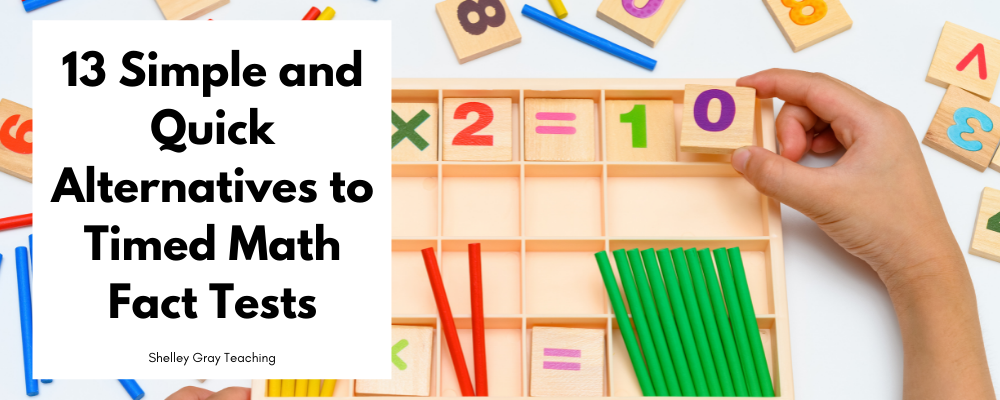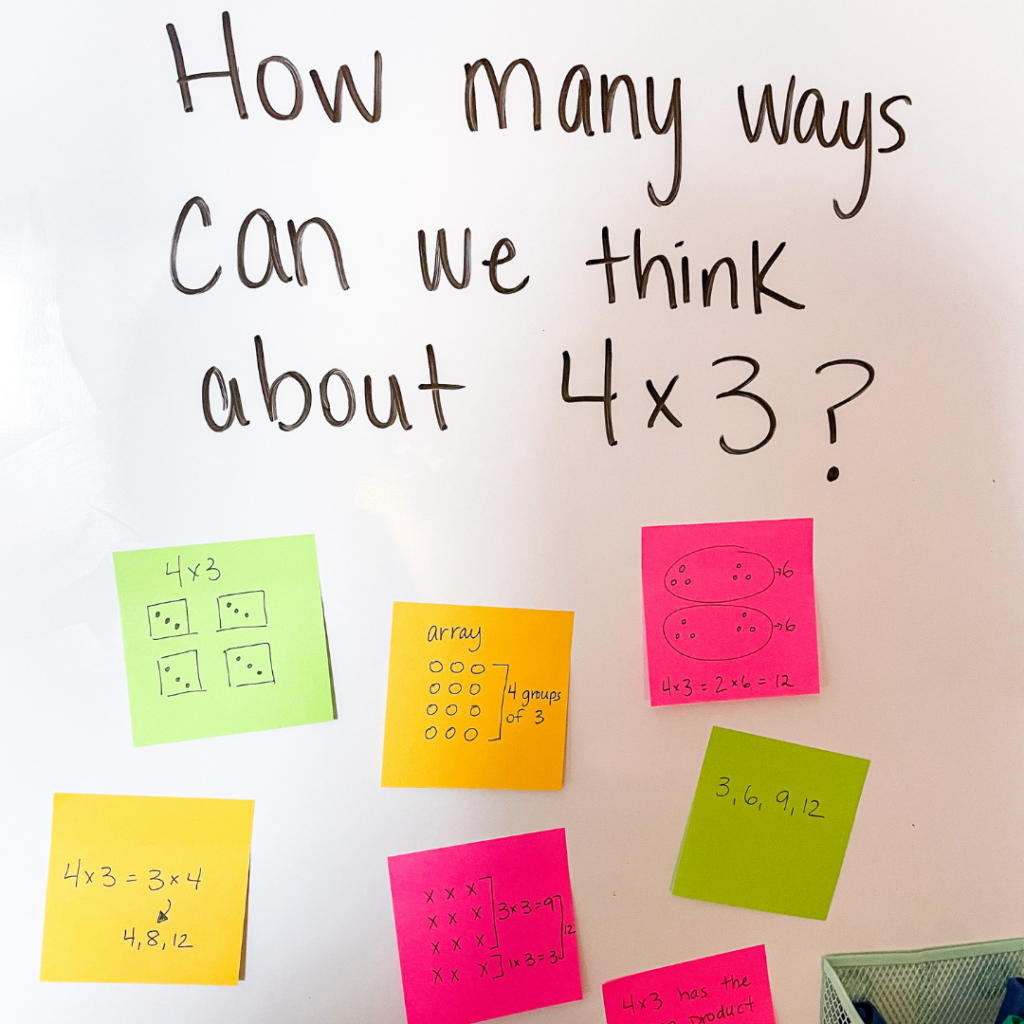
Timed tests. Chances are good that those words evoke some sort of emotion in you. For some (students and teachers alike), timed tests bring fear and anxiety. Others may recall the motivation and excitement in trying to beat the clock. While timed tests may have once been the norm for students to learn basic multiplication facts, many teachers are ready to try something new. Is your goal to teach multiplication facts in a way that will benefit all students, rather than only the ones who can be successful with timed tests?
Here are some ideas you can try in your classroom to help students develop automaticity with basic multiplication facts – without the stress of timed tests.
Timed Test Alternatives to Get Kids Moving and Grooving (Kinesthetic Ideas)
Skip Count Ball Toss
Put students in groups of 2-3 (or play as a whole class). Choose a number to skip count by and have students skip count aloud as they pass the ball from one player to the next.
Jumping Jack Facts
Choose a set of facts to recite as students do jumping jacks – “2 times 1 equals 2,” “2 times 2 equals 4,” etc.
Stand Up or Sit Down Products
Say a multiplication fact and have students stand if the product is even or sit if the product is odd. Then say the answer together.
Timed Test Alternatives to Get Kids Speaking and Listening (Auditory Ideas)
Math Talks
Engage students in conversations about how they remember multiplication facts or about different ways they can solve a multiplication problem. If you can do this consistently as a number talk routine – even better!


Related: Math Conversations – Digital Prompts for Number Talks
Choral Skip Counting
Count by 2s, 3s, etc. together as a class as a math warm-up.
Roll two dice and skip count by the sum.
Products Out Game
Have the whole class stand in a circle and count from 1 to 50. Choose a number and every time a student says a product of that number, they sit down. The last person standing is the winner. For example, if the number 4 is chosen, the students who say 4, 8, 12, 16, 20, 24, etc. will sit down.
Timed Test Alternatives to Get Kids Seeing and Drawing (Visual Ideas)
Anchor Charts/Multiplication Charts
Hang posters or anchor charts showing vocabulary and multiplication strategies. It can be even more effective if you have students help you make the anchor charts – or if they can make them themselves!

Manipulatives
Use counters or base ten pieces to make arrays or equal groups.

Drawing Arrays Game
In pairs, have students roll two dice and draw the array on a piece of graph paper. Draw as many arrays as possible until the page is filled. The last one to make an array wins.

How Many Ways?
Have students brainstorm all the possible ways they can think flexibly about a multiplication fact and write their ideas on sticky notes. Have students reflect on the different ideas during a whole-class discussion or number talk.

Timed Test Alternatives to Get Kids Reading and Writing (Linguistic Ideas)
Word Problems and Real Life Situations
Giving students a context for why they are multiplying helps them make sense of the problem and how to solve it. For example, there is a big difference between asking a student to solve 2×3 versus asking them how many socks there are in 3 pairs. Real-Life Math Projects can help students understand where multiplication is used in real life.
Flashcards
The act of creating flashcards is often as important as using the flashcards once they’re finished. Have students create visual flashcards and draw a picture that represents each fact.
Alternatively, use a traditional set of multiplication flashcards, but have students sort them by facts they know and facts they still need to work on.

Related: FREE! Quick Tasks for Multiplication Flashcards
Multiplication Notebooks
Give students a place to record and reflect on the multiplication strategies they are learning. This can be done in a regular classroom notebook, or in a pre-made booklet like the one shown below.

Not every idea will work for every student, but when we give kids the opportunity to learn and practice in many different ways, we allow them to learn in a way that works best for them. When kids understand that there are many different ways to learn and practice multiplication facts, it can relieve the stress and anxiety that so often comes along with timed tests, while boosting number sense and flexibility with numbers.
How do you practice math facts in your classroom? I’d love to hear in the comment section below!
Ready to change the way your students understand multiplication?
- How you can ensure that gaps in understanding get filled or don’t exist in the first place
- Why speed isn’t everything and what we can do instead
- Practical, easy-to-implement ideas that result in deep understanding






